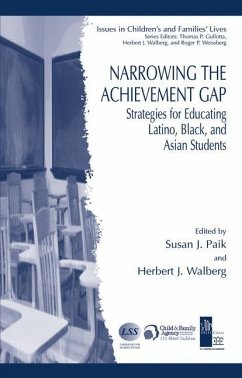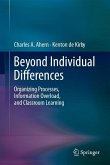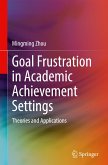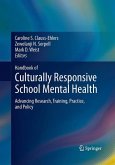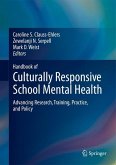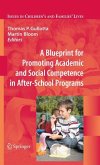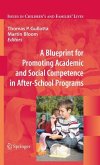The subject of minority children's learning has long been the concern of civic leaders, parents, scholars, and educators. The federal legislation, 'No Child Left Behind' emphasizes the concern even more. It specifically requires assessing the academic achievement of minority students, particularly in economically disadvantaged areas, and holding schools accountable for their progress. Schools that fail to attain "Adequate Yearly Progress" face the real possibility of being forced to close if they continually fail to perform. Unlike the past, these are increasingly "high stakes" consequences for educators, parents, students and the schools that serve them. This book is timely and relevant because it addresses these issues, and recommends solutions for Latino, Black, and Asian students. This book also has implications for the problems the nation faces in helping all students to learn well, particularly those that lag in academic achievement. In considering the broad problems and inrecommending solutions, the book provides breadth, concision, and unique organization. As the introductory chapter makes clear, the book simultaneously considers not only the three most visible minority groups in the U. S. , but draws upon the perspectives of anthropology, education, ethnic studies, psychology, and sociology. From these several persp- tives, this book is organized within three broad sections: 1) culturally diverse families and schooling; 2) issues of immigration and schooling experiences; and 3) socio-cultural perspectives on teaching, learning, and development. Within each section, the authors marshal research literature regarding each ethnic minority group.
Hinweis: Dieser Artikel kann nur an eine deutsche Lieferadresse ausgeliefert werden.
Hinweis: Dieser Artikel kann nur an eine deutsche Lieferadresse ausgeliefert werden.
From the reviews:
"This volume is an important and impressive collection of scholarship that addresses one of the more intractable education problems of our times--ensuring that ALL children receive a quality education."
-- Gloria Ladson-Billings, Kellner Family Professor in Urban Education, University of Wisconsin at Madison, and 2005-2006 President of AERA
"A major contribution to the field, the book provides important insights into the schooling experiences of Latino, Black, and Asian Americans and offers implications for improving educational outcomes and well-being for ethnic minority groups. The in-depth analyses provided by the chapter authors should be of substantial appeal to a wide audience because of its interdisciplinary approach and orientation to theory, research, and practice."
--Stanley Sue, Distinguished Professor of Psychology and Asian American Studies, University of California at Davis
"In considering the broad problems and in recommending solutions, the book provides breadth, concision, and unique organization... The ideas and recommendations in this book will certainly contribute to the national debate concerning how we face the challenge to help all our children learn well."
--Edmund W. Gordon, John M. Musser Professor of Psychology at Yale University, Richard March Hoe Professor of Education and Psychology at Teachers College, Columbia University
"This volume addresses the most important issue in contemporary education: understanding diversity while making it a pedagogical asset. Written by prominent scholars, the chapters feature incisive, interdisciplinary analyses of the social and historical situation of the groups and draw implications for schools, homes, and neighborhoods as environments for learning and development. The book is not only a wonderful read, but also a superb addition to the literature and our common knowledge about these vital issues."
--Luis C. Moll, Professor andAssociate Dean, College of Education, University of Arizona
"The challenge undertaken in this book is to understand the similarities and differences across ethnic and racial groups. ... For a reader unfamiliar with specific minority populations, this book will identify and explain many of the complex challenges facing minority families and students that can interfere with students' achievement." (Jennifer B. Unger, PsycCRITIQUES, Vol. 52 (47), 2007)
"The purpose of the conference and the subsequent book was to unite interdisciplinary scholars, practitioners, and policy makers in understanding the achievement gap for each of the three largest minority groups in the United States from multiple perspectives and varied theoretical foundations. ... The primary target audience of the book is researchers, educators and those who influence policy who have an interest in narrowing the achievement gap for Latino, Black, and Asian minority students." (Troy E. Beckert, Journal of Youth and Adolescence, Vol. 37, 2008)
"This volume is an important and impressive collection of scholarship that addresses one of the more intractable education problems of our times--ensuring that ALL children receive a quality education."
-- Gloria Ladson-Billings, Kellner Family Professor in Urban Education, University of Wisconsin at Madison, and 2005-2006 President of AERA
"A major contribution to the field, the book provides important insights into the schooling experiences of Latino, Black, and Asian Americans and offers implications for improving educational outcomes and well-being for ethnic minority groups. The in-depth analyses provided by the chapter authors should be of substantial appeal to a wide audience because of its interdisciplinary approach and orientation to theory, research, and practice."
--Stanley Sue, Distinguished Professor of Psychology and Asian American Studies, University of California at Davis
"In considering the broad problems and in recommending solutions, the book provides breadth, concision, and unique organization... The ideas and recommendations in this book will certainly contribute to the national debate concerning how we face the challenge to help all our children learn well."
--Edmund W. Gordon, John M. Musser Professor of Psychology at Yale University, Richard March Hoe Professor of Education and Psychology at Teachers College, Columbia University
"This volume addresses the most important issue in contemporary education: understanding diversity while making it a pedagogical asset. Written by prominent scholars, the chapters feature incisive, interdisciplinary analyses of the social and historical situation of the groups and draw implications for schools, homes, and neighborhoods as environments for learning and development. The book is not only a wonderful read, but also a superb addition to the literature and our common knowledge about these vital issues."
--Luis C. Moll, Professor andAssociate Dean, College of Education, University of Arizona
"The challenge undertaken in this book is to understand the similarities and differences across ethnic and racial groups. ... For a reader unfamiliar with specific minority populations, this book will identify and explain many of the complex challenges facing minority families and students that can interfere with students' achievement." (Jennifer B. Unger, PsycCRITIQUES, Vol. 52 (47), 2007)
"The purpose of the conference and the subsequent book was to unite interdisciplinary scholars, practitioners, and policy makers in understanding the achievement gap for each of the three largest minority groups in the United States from multiple perspectives and varied theoretical foundations. ... The primary target audience of the book is researchers, educators and those who influence policy who have an interest in narrowing the achievement gap for Latino, Black, and Asian minority students." (Troy E. Beckert, Journal of Youth and Adolescence, Vol. 37, 2008)

